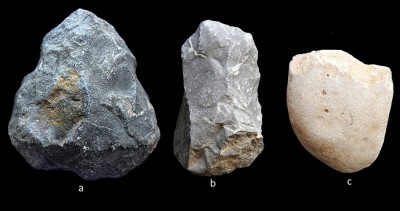Khorbas: a Lower Palaeolithic site on Qeshm Island in the Persian Gulf
Abstract

Despite the potential importance of southern Iran, and the Persian Gulf area in particular, for discussions on the dispersal of early hominins from Africa into Eurasia during the late Pliocene and early Pleistocene (Bar-Yosef & Belfer-Cohen 2001; Rose 2010), this area has remained almost unexplored until recently. Historically, Palaeolithic survey and excavations in Iran have mainly concentrated in western regions, especially the Zagros Mountains. As a result of recent studies, however, evidence for Palaeolithic sites in the southern regions of Iran, from Fars province to Qeshm Island, has greatly increased (Dashtizade 2009, 2010). Even with this improvement, no sites of Lower Palaeolithic date have yet been reported from the southern coastal areas on one of the proposed early hominin routes into Eurasia. As a result, it has been suggested that the few Lower Palaeolithic sites reported from other parts of Iran, especially in the west (e.g. Biglari & Shidrang 2006), were not populated from the south.
Author
- Sirvan Mohammadi Ghasrian
Iranology Foundation, Kurdistan Branch, Ghatarchian, Boulevard of Kurdistan, Amin-al-eslam House, Sannandaj, P.O. Box 6613754774, Kurdistan, Iran (Email: mohammadi.sirvan@gmail.com)

 Cite this article
Cite this article